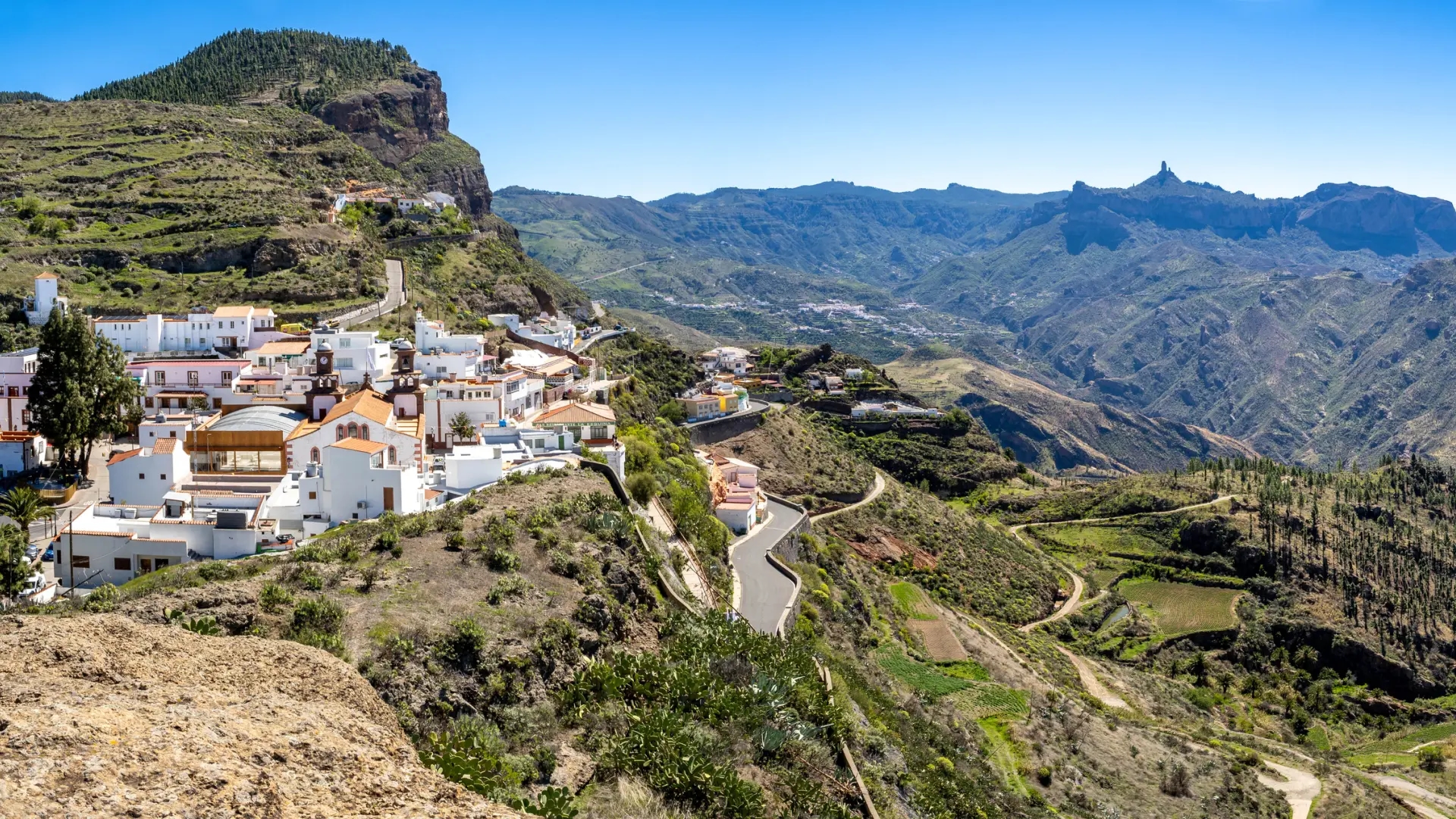The smallest town in Gran Canaria: high on a mountain and with a viewpoint in homage to Unamuno

Autumn is an ideal time to resist leaving the good weather behind and heading to a Spanish destination that boasts year-round good weather. Just mentioning the best temperature tells you where we're talking about, right? If you're planning a getaway to Gran Canaria , we suggest you don't limit yourself to its magnificent beaches and also dedicate a day of your vacation to enjoying the rural charm of the interior. Like Artenara , a small town located in the middle of a natural park, it's not only the smallest but also the highest on the island. Wild nature, interesting archaeological sites, and a truly relaxed atmosphere are just some of what awaits you in this destination, which, with its breathtaking landscapes, captivated the writer Miguel de Unamuno.
The historic centerWe begin to discover Artenara through Plaza San Matías, the town's nerve center and home to some of the town's main buildings , such as the post office and the mid-19th-century parish house, as well as the 19th-century San Matías Church , with its two red stone towers, which is right in the middle. Its interior is notable for its the ceiling is covered with a beautiful coffered ceiling of Mudejar influence made from Canary Island pine wood.
The hermitage carved in stoneDespite its small size, Artenara has two important churches. In addition to the Church of San Matías, there is a curious chapel, the Virgen de la Cuevita, dating from the 18th century, with a carving of the Virgin brought from America . The altar, pulpit, and baptismal font are made of volcanic stone. From the outside, as in any other part of Artenara, you can enjoy breathtaking views.
Cave houses, the pride of their inhabitantsThese humble traditional houses (where many of the town's inhabitants still live) are one of the town's most distinctive features and recreate a part of its history , taking us back to when the Aboriginal people inhabited the area thousands of years ago. You can tour some of them, which belong to the Ethnographic Museum, and enjoy the wonderful views from their terraces in a quiet setting. They have been restored, maintaining the characteristics of the town's typical dwellings, and have a regular temperature throughout the year , although cooler in summer and slightly warmer in winter. Some have been converted into rural accommodations and restaurants.
Unamuno's viewpointAnd if the cave dwellings or ancient aboriginal houses are part of the town's charm, there's another undisputed highlight of this getaway: the stunning landscape. From any corner of Artenara, you can enjoy breathtaking views . But there's one viewpoint you shouldn't miss: Unamuno's Balcony, which also features a statue of the writer to commemorate his stay on the island in 1910. From here, you'll have spectacular views of Barranco Grande, Roque Bentayga, Roque Nublo, and Tejeda, one of the most beautiful villages in the Canary Islands.
A little bit of Canarian pinchingAnd when hunger strikes, if you're wondering what to eat, the list is long. If you opt for "pizqueo" (as they call Canarian tapas), don't miss the famous "papas arrugadas" (wrinkled potatoes with mojo sauce), "ropa vieja" (old clothes), or a selection of local cheeses made with a blend of goat, cow, and sheep milk. And if you want something more substantial, you'll find dishes of goat , rabbit in salmorejo (salmorejo sauce ), or fried pork, not to mention a classic from Artenara: "la ropa vieja" (a traditional dish of the region). Watercress stew. And for sweet treats, ask for the traditional Canarian bienmesabe , made with crushed almonds as the main ingredient, accompanied by syrup, egg yolks, lemon peel, and cinnamon.
How to get to ArtenaraFifty kilometers from Las Palmas de Gran Canaria, along narrow, winding roads, lies this town, one of the most striking in the Canary Islands and the best example of how much more the island is than beaches. If you leave the capital, take the Carretera del Norte (Northern Highway ) and, after passing through the towns of Teror and Valleseco, you'll reach Artenara. Another way to get there is to take bus 220 (at the bus station), which usually runs three times a day.
20minutos





